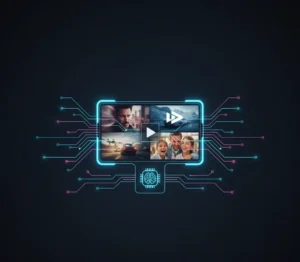Mastering User Stories – Discover the essentials of writing effective User Stories for Agile development. Learn about the ‘Why,’ ‘How,’ and the 3C’s method (Card, Conversation, Confirmation). Understand the INVEST criteria and techniques for splitting User Stories to enhance collaboration and deliver valuable outcomes.
User Stories are narratives that foster collaboration, guide development, and drive meaningful outcomes. However, they are often misused as containers for requirements. Here’s a comprehensive guide to understanding and creating effective User Stories:
1. Why? 🤔
Focus on the perspective of a user who wants to derive value from the product. A User Story should highlight the user’s desired outcomes and be embedded in the context where the user seeks value from the product. This approach ensures that development efforts are aligned with what truly matters to the end-user, thereby enhancing the product’s value.
2. How? 🛠️
The basic format of a User Story includes:
- WHO: As a [user type]
- WHAT: I want [action to perform]
- WHY: So that [the desired outcome]
A prerequisite to working with User Stories is understanding the users, ideally segmented by their needs and desired outcomes. This segmentation helps in crafting User Stories that are relevant and impactful.
For example:
- WHO: As a marketing manager,
- WHAT: I want to generate detailed performance reports,
- WHY: So that I can analyze campaign effectiveness and adjust strategies accordingly.
3. Effective User Stories: 3C's Method 📋💬✔️
The 3C’s of User Stories are Card, Conversation, and Confirmation. These elements are essential for writing a good User Story.
Card 📝
A card explains WHO, WHAT, and WHY. Historically, these were physical cards, but today, we create User Stories in tools like Jira, Trello, or any other project management software. The card serves as a placeholder for the conversation and confirmation that follows.
Example Card:
- WHO: As a user,
- WHAT: I want to drag and drop tasks within a list,
- WHY: So that I can reorder them quickly and easily.
Conversation 💬
Rather than creating a detailed specification, discuss the reasoning behind the User Story. This conversation involves the entire team and sometimes the stakeholders to ensure everyone understands the context and the value behind the story. It’s not just about what needs to be done, but why it needs to be done.
The conversation phase is crucial because it:
- Promotes understanding of the user’s needs.
- Clarifies the objectives and expected outcomes.
- Encourages collaborative problem-solving and brainstorming.
Confirmation ✔️
Confirmation refers to the Acceptance Criteria that should be fulfilled to ensure the requirements have been met and delivered correctly. These criteria act as a checklist to confirm that the story has been implemented as intended. Acceptance Criteria should be concise, clear, and testable.
Example Acceptance Criteria for the drag-and-drop functionality:
- The user can drag tasks from one position to another within the same list.
- The new task order is saved automatically.
- The user receives a confirmation message when the order is successfully saved.
4. The INVEST User Stories 📈
INVEST is an acronym representing the essential qualities of well-written User Stories:
- Independent: Each User Story should be self-contained and not depend on other stories. This independence ensures that stories can be prioritized and developed in any order without dependencies causing delays.
- Negotiable: The details of the User Story can be discussed and negotiated with the team and the stakeholders. Flexibility in the details allows for adaptive planning and iterative development.
- Valuable: The User Story delivers value to the user. It’s essential to ensure that each story contributes to the product’s overall value proposition.
- Estimable: It should be possible to estimate the effort required to complete the User Story. Estimability helps in planning and resource allocation.
- Small: User Stories should be small enough to be completed within a single iteration. If you do not work in iterations, you might assume 2-4 weeks as the rule of thumb. Smaller stories are easier to manage, test, and deliver.
- Testable: There are clear criteria to determine if the story has been successfully implemented. Testability ensures that the story can be validated effectively.
These qualities are desirable, but do not obsess over the acronym. Use it as a guideline to ensure your User Stories are well-structured and actionable.
5. How to Split User Stories?
Some User Stories are too big to be selected for implementation. You must break them into smaller, more manageable pieces to deliver value faster and start learning from customers using your product for real.
- Epic: A larger element, typically combining 5-15 smaller User Stories (context-specific).
- User Stories: Small, manageable items.
- Tasks: Used to plan and monitor the exact work performed by engineers. PMs have nothing to say here.
Some add more layers, but in my experience, you don’t need that. Keep it simple.
Conclusion : Mastering User Stories
User Stories are a powerful tool for driving meaningful outcomes in Agile development. By understanding and applying the principles of effective User Stories, you can enhance collaboration, guide development, and deliver value to your users. Remember to focus on the perspective of the user, employ the 3C’s method, adhere to the INVEST criteria, and split User Stories into manageable pieces for better implementation.


















